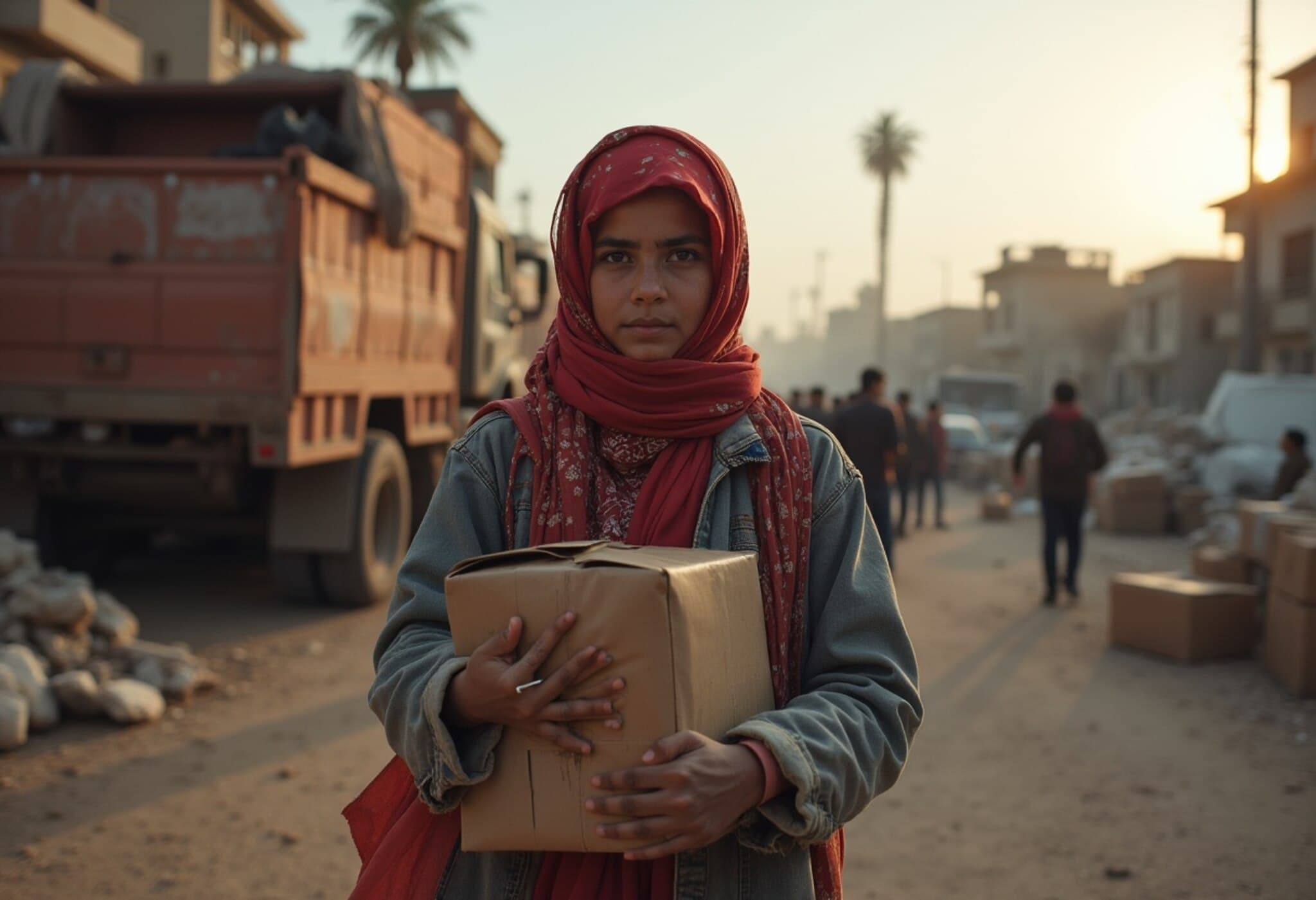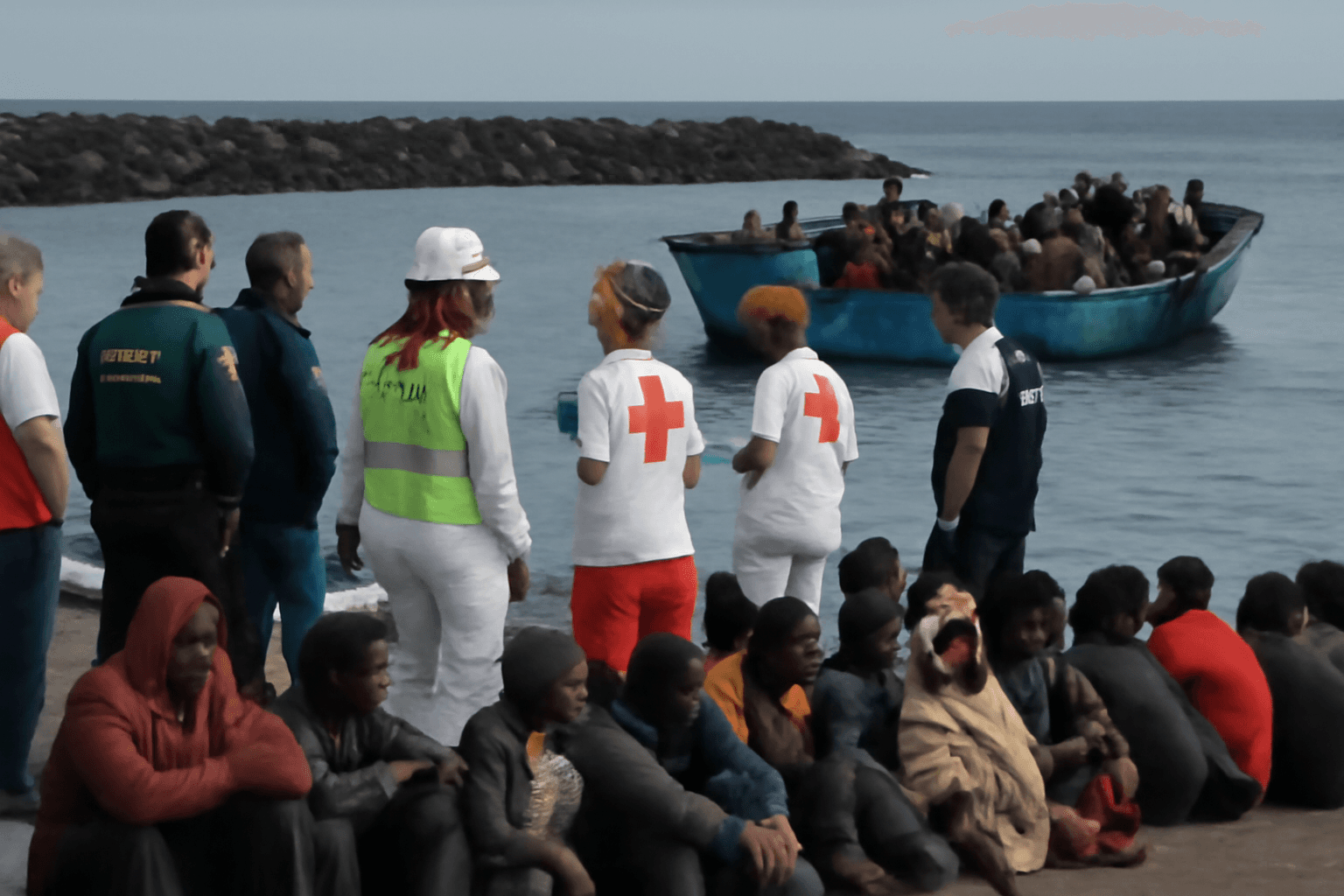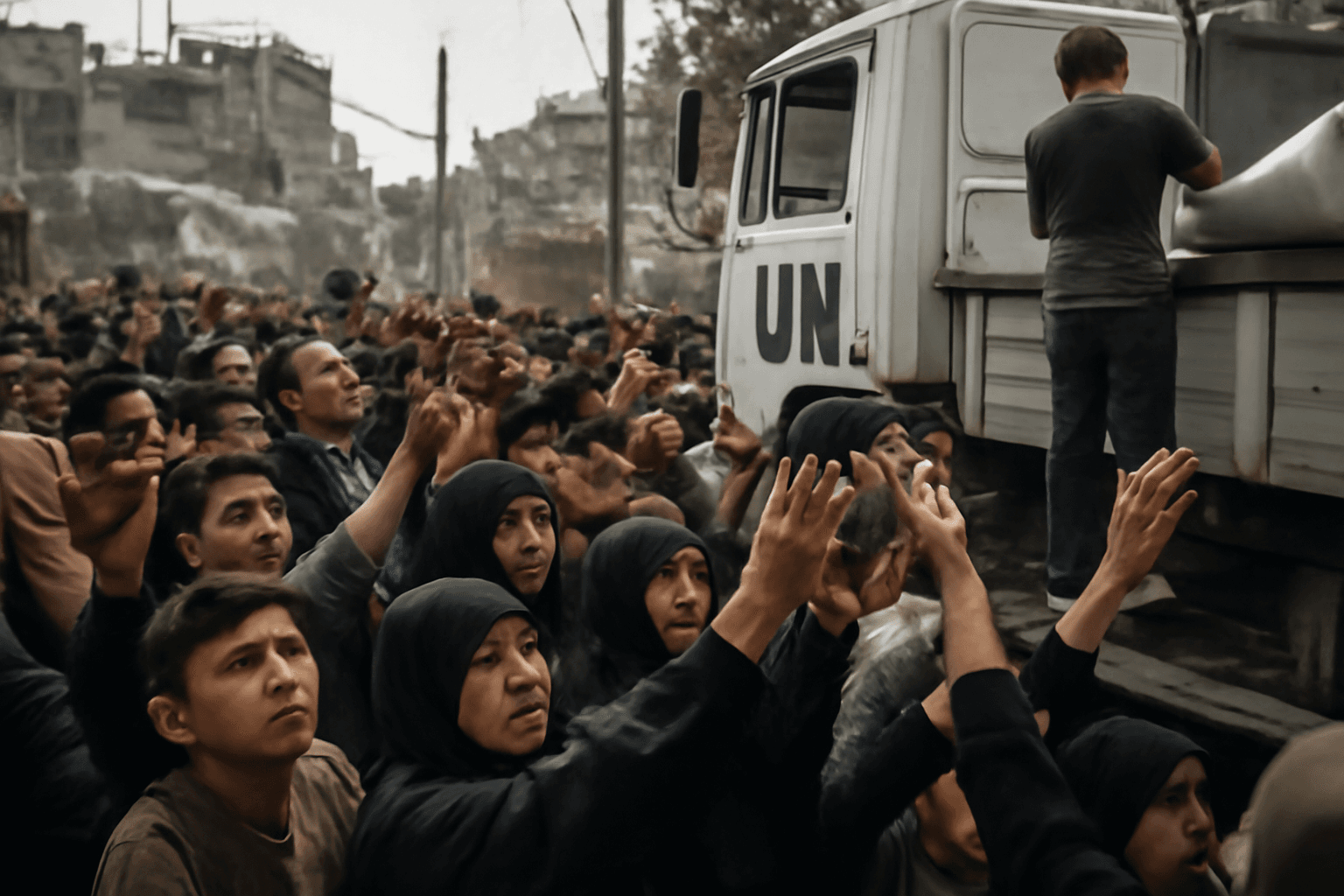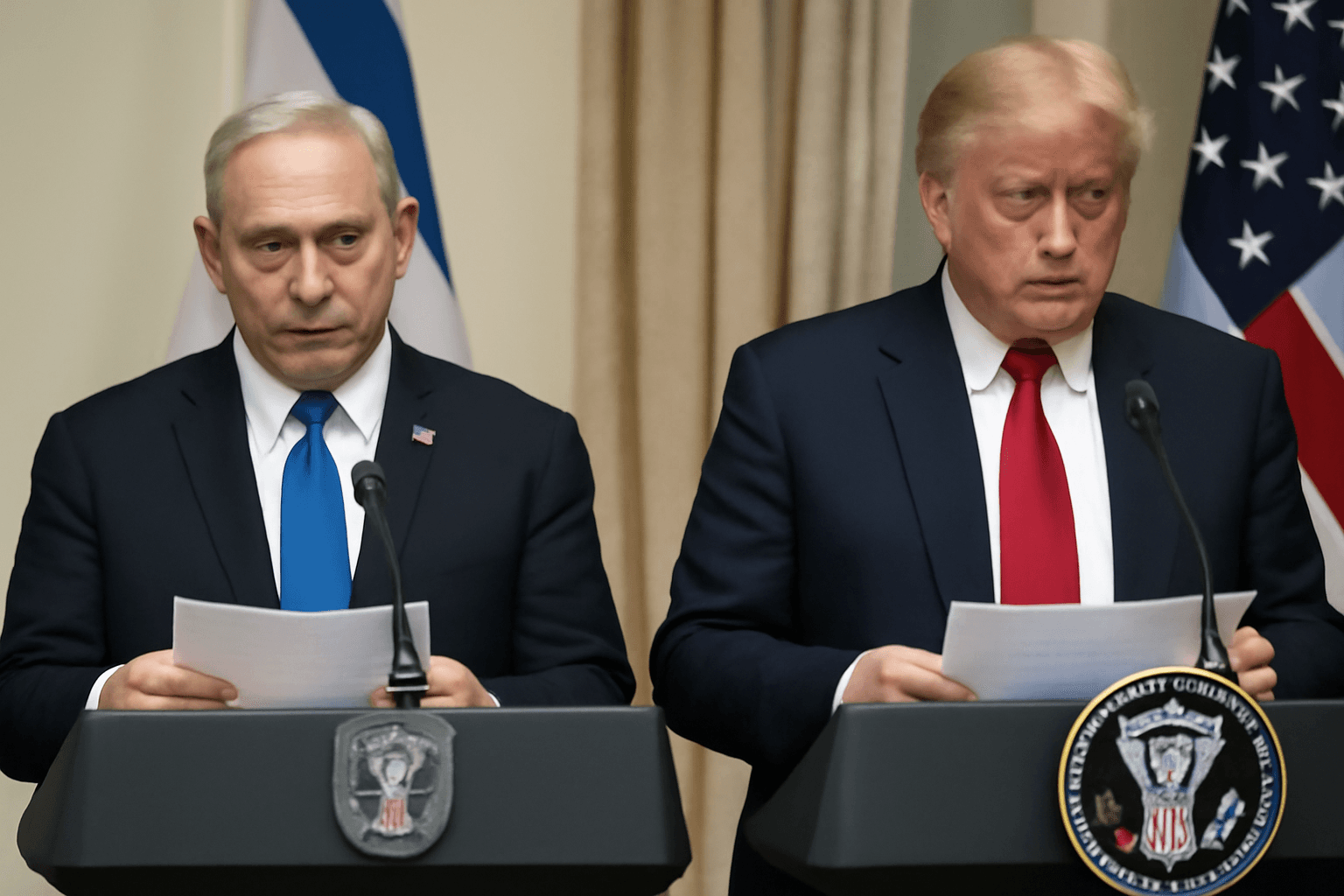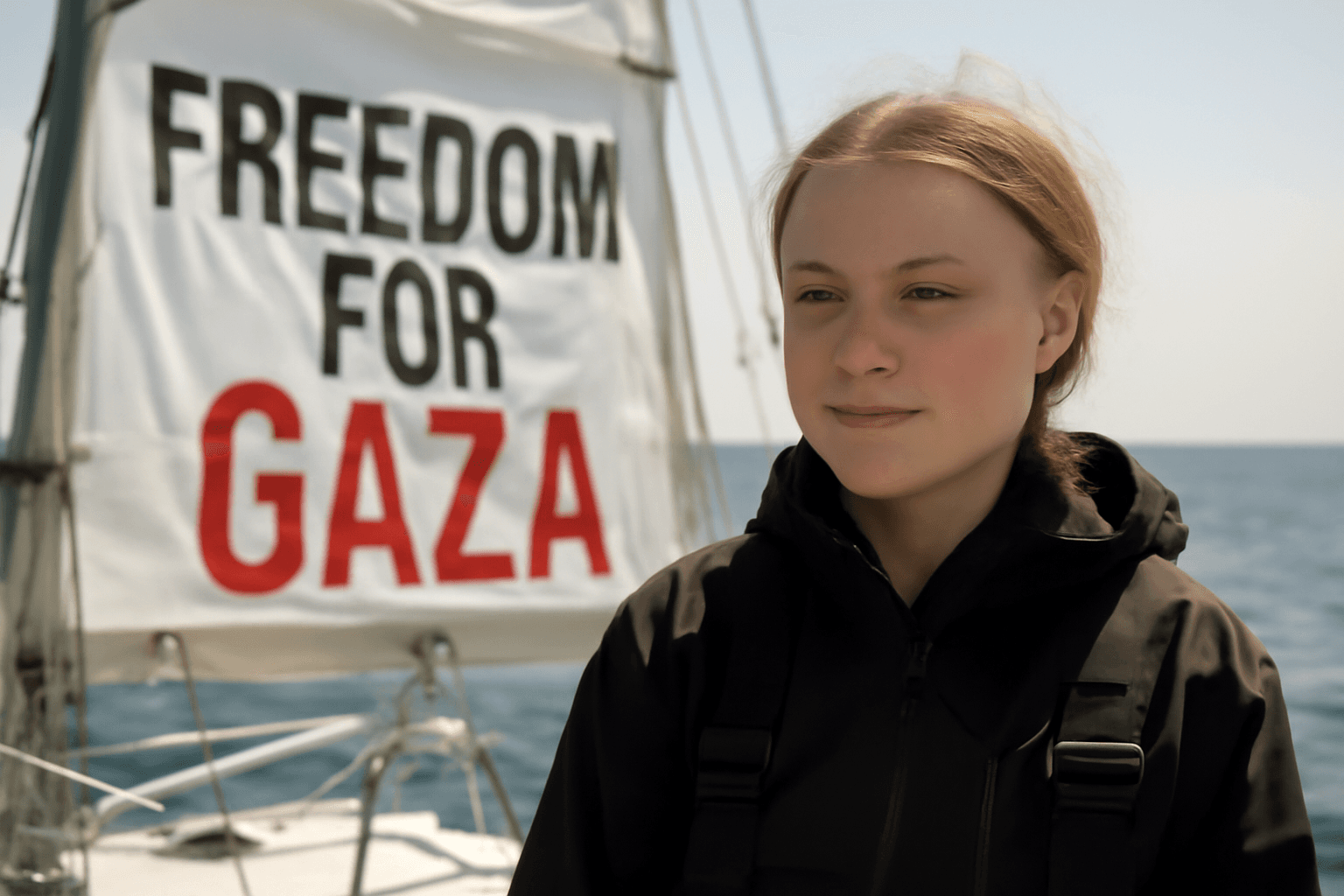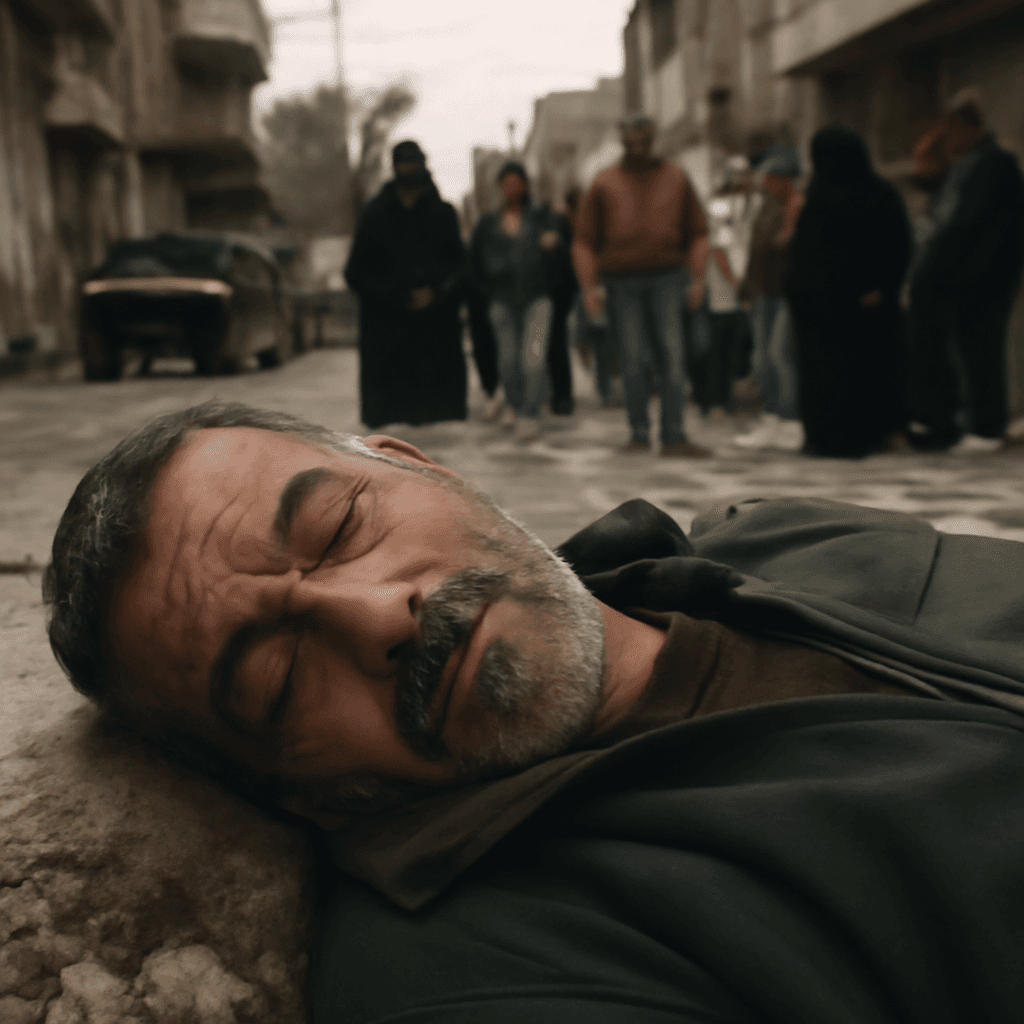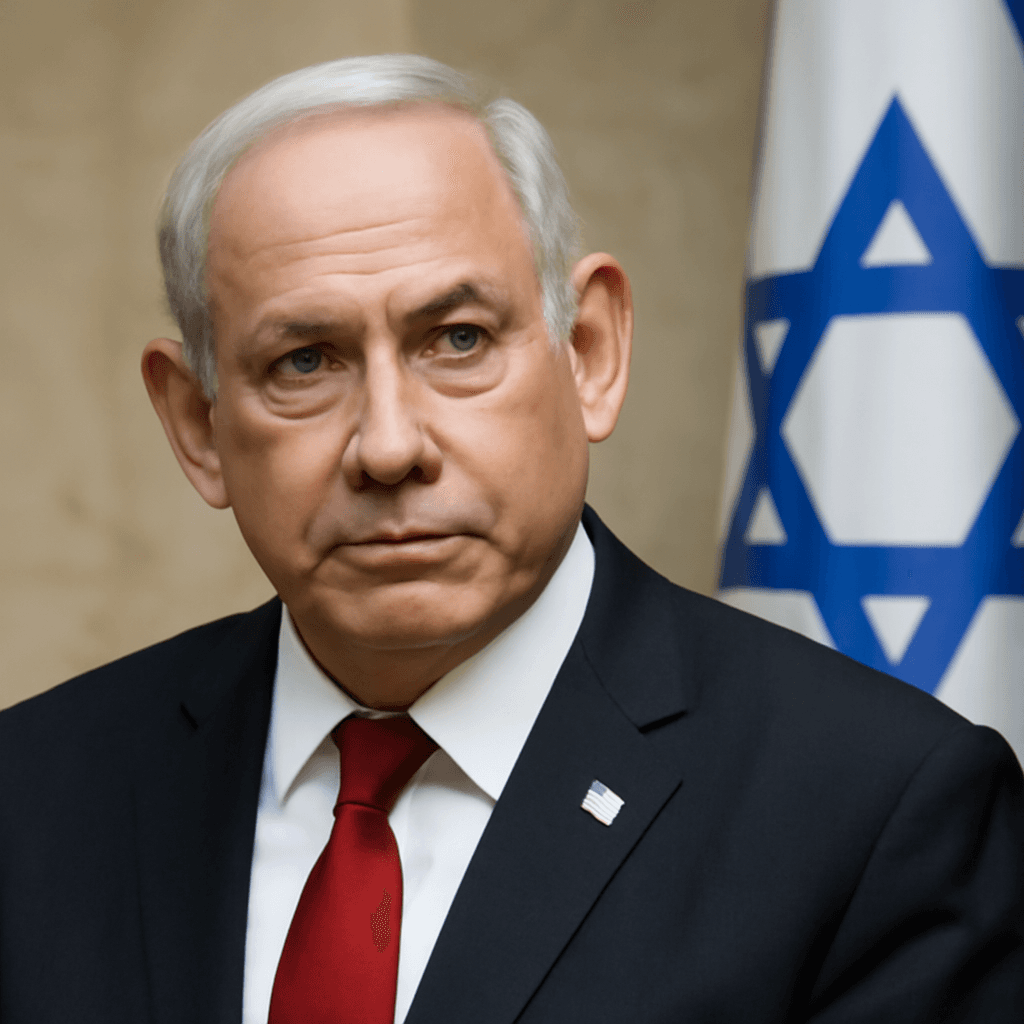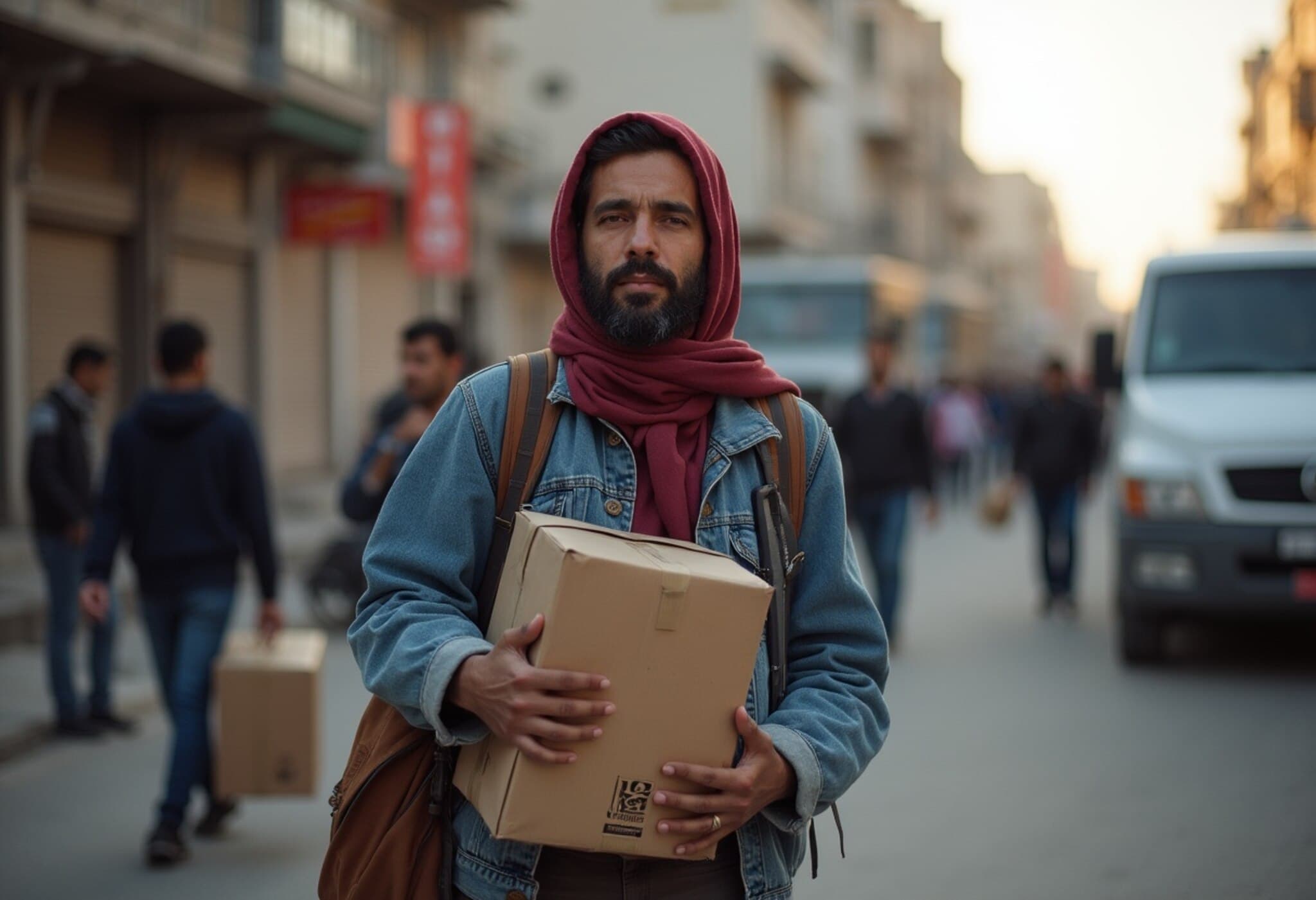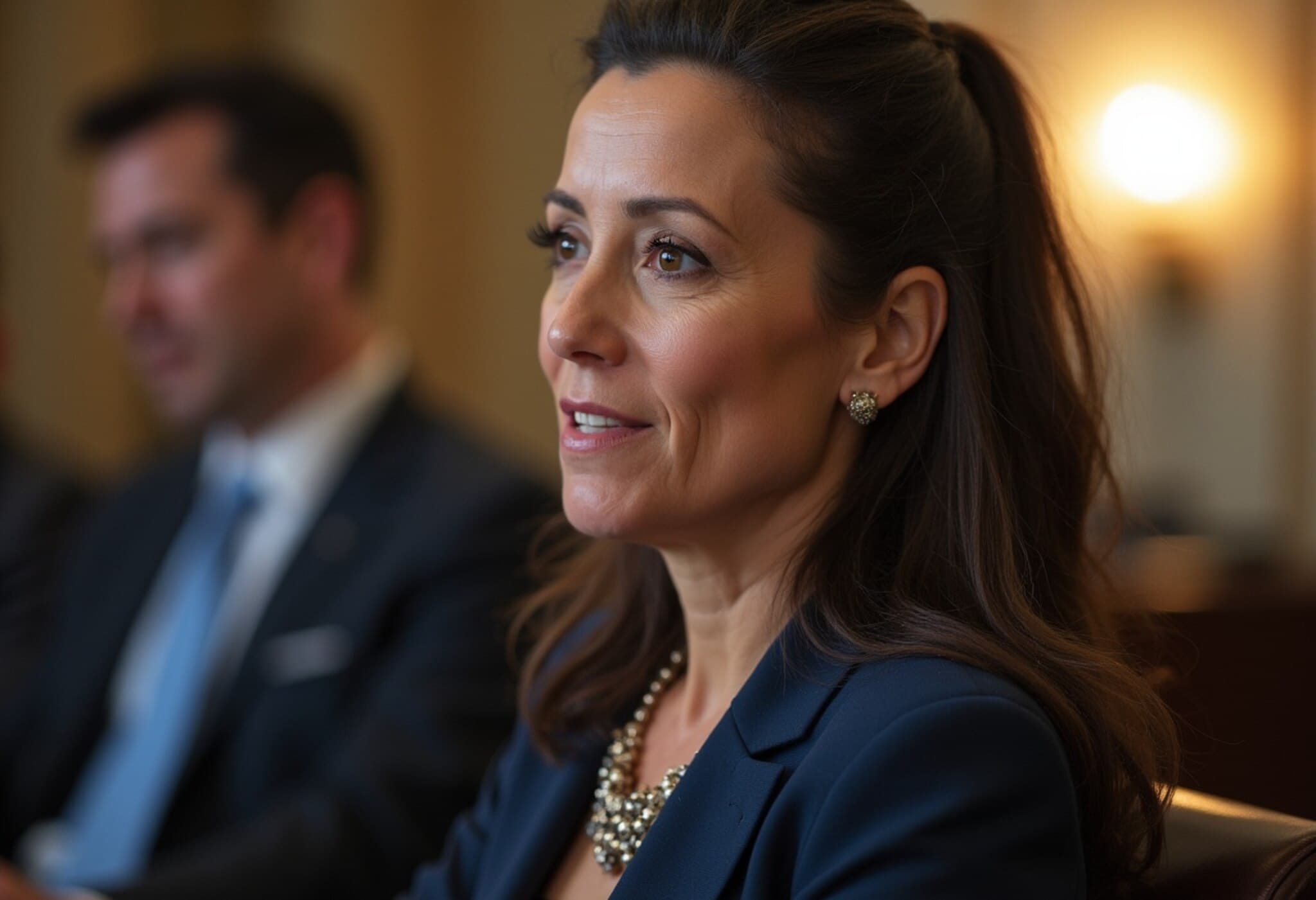Inside Gaza's Struggle for Survival Amid Worsening Humanitarian Crisis
As the protracted conflict in Gaza enters its 22nd month, the humanitarian situation has taken a catastrophic turn. The United Nations-backed hunger experts warn of a looming famine, with Gaza already meeting two of the three critical famine indicators: a drastic decline in food consumption and soaring levels of acute malnutrition.
The Dire Reality at Aid Drop Zones
In a desperate scramble for sustenance, Palestinians risk life and limb racing toward limited aid drop zones established within the Gaza Strip. Recent reports by Reuters and the Associated Press have documented dozens of fatalities and injuries during these chaotic attempts to secure food and supplies.
One poignant image captures Palestinians climbing atop a truck laden with humanitarian aid as it navigates the Morag corridor near Rafah in southern Gaza. This corridor, a narrow passage amidst a besieged region, has become a critical yet dangerous route for aid distribution.
Blockade Impact: The Crushing Effect on Food Security
With the war crippling Gaza's agricultural activities and an Israeli ban on fishing, the territory is cut off from local food sources. The residents’ survival hinges almost entirely on external aid. Yet, Israel's ongoing blockade combined with military offensives severely restricts safe aid entry, exacerbating the starvation crisis within.
The Challenge of Air-Dropped Aid
While international efforts to deliver aid have included air-dropping supplies over Gaza, these attempts face significant drawbacks. The United Nations and humanitarian organizations emphasize that parachute drops are costly and provide less effective aid delivery compared to ground convoys.
Furthermore, numerous air-dropped food parcels have been lost—some falling into the Mediterranean Sea, others landing in Israeli-designated 'red zones' that civilians are ordered to evacuate from. This forces Palestinians to risk dangerous conditions to retrieve vital food items such as flour and lentils, often gathering them from debris-strewn grounds.
Scenes from the Ground: Tension and Tragedy at Distribution Points
- Reports from Gaza’s Shifa Hospital detail 16 fatalities and over 130 injuries near the Zikim Crossing, the primary northern entry point for aid, after violent incidents during aid deliveries.
- In the Morag Corridor between Khan Younis and Rafah, at least 10 have died amidst thousands waiting for aid, where chaos and crowding pose lethal risks.
- Distribution centers, such as those operated by U.S.-backed organizations in Netzarim, have experienced violent altercations, including fistfights and use of batons among the desperate awaiting aid.
Expert Insight: What Lies Ahead?
The ongoing blockade and military restrictions threaten to deepen the famine crisis unless immediate, reliable humanitarian corridors are established. From an American and international policy perspective, the situation raises urgent questions about balancing security concerns with humanitarian obligations, particularly under international human rights and humanitarian law.
Experts emphasize the need for sustained global diplomatic efforts to ensure unhindered aid access and protection of civilians, while underscoring the grim reality that air-dropped provisions alone cannot meet Gaza’s massive humanitarian needs.
Final Thoughts
The harrowing images emerging from Gaza are not just news photos—they are a stark reminder of the human cost of geopolitical conflict and the urgent need for coordinated international response. Behind every desperate scramble for food is a family fighting for survival amidst unprecedented adversity.
This ongoing crisis in Gaza underscores the catastrophic consequences when political blockade and military conflict intersect with humanitarian needs. While the tragedy unfolds, key questions linger:
- How can international mechanisms better enforce aid access in conflict zones?
- What innovative solutions exist beyond air drops to ensure food reaches those trapped in war-torn areas?
- And what role should global actors, including the U.S., play in advocating for and facilitating peace and relief?
As readers and global citizens, staying informed and engaged is critical to supporting efforts that prioritize human dignity and life amid conflict.

